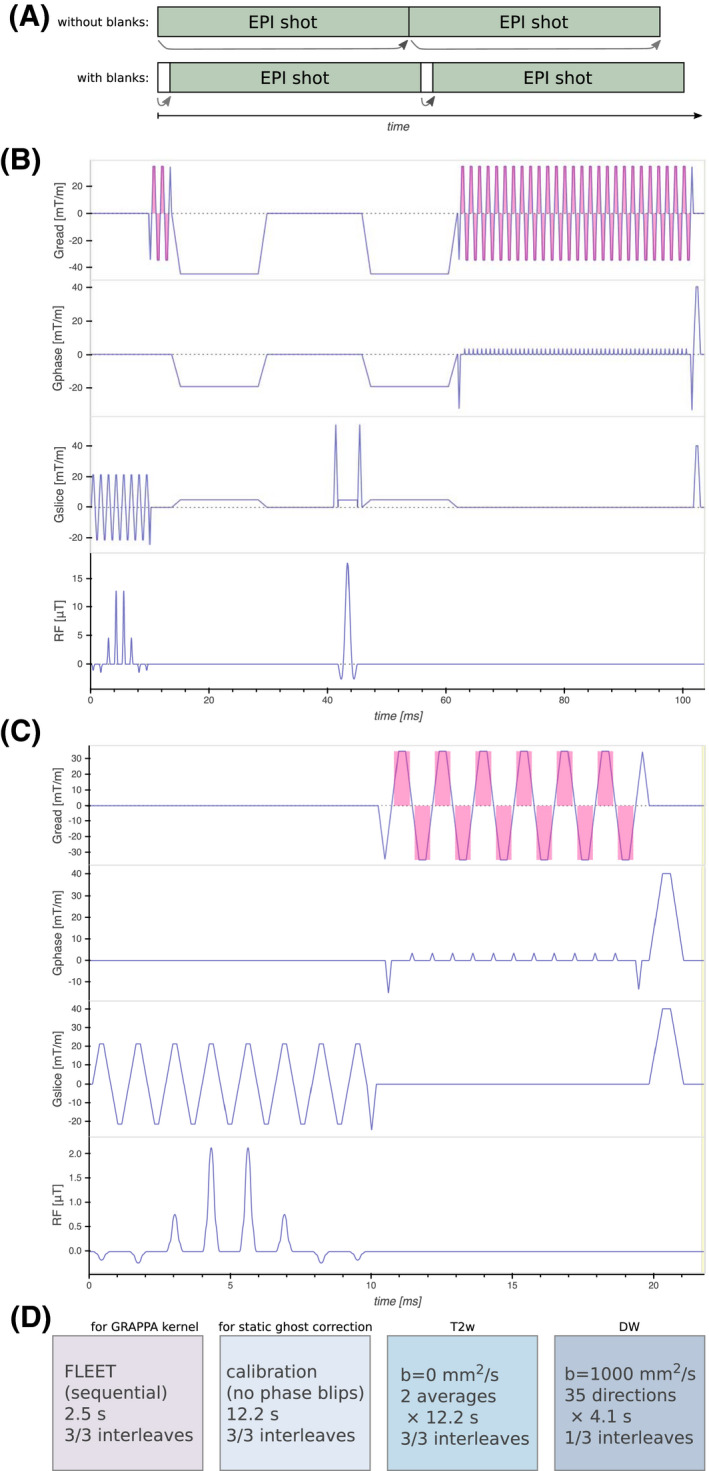FIGURE 1.

A: Since the prospective update of a shot is prepared during the preceding sequence playout, a 3 ms blank sequence was interleaved with the EPI sequence. This substantially reduced the additional latency of the updates. B: Pulse sequence diagram of the main EPI sequence. The spectral‐spatial excitation pulse followed by phase reference lines for dynamic ghost correction, Stejskal‐Tanner diffusion encoding, and EPI readout. The magenta shade indicates signal readout. C: Pulse sequence diagram of the FLEET sequence, which is essentially a stripped version of the main sequence. The same RF pulse but with lower flip angle is followed by a short EPI readout. D: Sequence of imaging volumes. For the first volume (FLEET), all shots for a slice were acquired sequentially, to enable motion‐robust GRAPPA calibration. The second calibration volume was acquired without phase encoding for static ghost correction (used to ghost correct the FLEET volume). The T2‐weighted volumes were fully shot but each shot was reconstructed with GRAPPA separately before averaging. The diffusion weighted volumes were single‐shot (R = 3). Prospective updates were applied once before the two calibration volumes and before each excitation for the imaging volumes. The total acquisition time was 3 minutes 1 second
